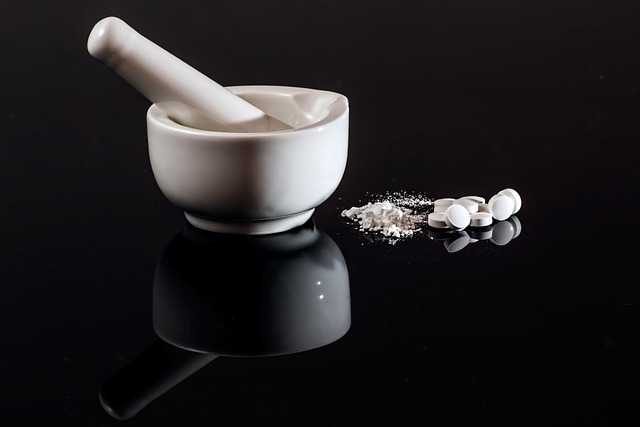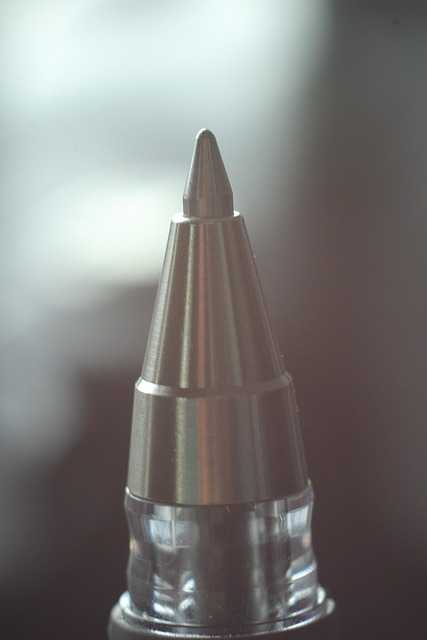Table of Contents
- Exploring the Essence of Modern Art in Home Decor
- Incorporating Bold Colors and Unique Textures
- Creating Focal Points with Statement Pieces
- Mixing Traditional and Contemporary Elements
- Tips for Curating a Personal Art Collection
- Q&A
- Concluding Remarks
Exploring the Essence of Modern Art in Home Decor
Modern art has the remarkable ability to transform any space into a compelling narrative. By incorporating vibrant colors, bold shapes, and innovative materials, modern artworks serve not only as decor but as conversation starters. A striking painting or a sculptural object can act as the focal point in a room, guiding the aesthetic of the surrounding furnishings. Think about juxtaposing a minimalist couch with an oversized abstract canvas, creating a captivating visual contrast that adds depth and interest.
To seamlessly integrate modern art into home decor, consider the following elements:
- Color Harmony: Select artworks that complement the existing color palette of your room. This enhances the overall coherence of your design.
- Scale and Proportion: Large artworks can anchor a room, while smaller pieces work well in groups to create a gallery wall effect.
- Texture and Material: Incorporate mixed media pieces that engage with other textures in the room, such as fabrics, metals, or woods.
Furnishings and artwork need not compete; rather, they should create a dialogue that expresses personal style. A carefully curated arrangement of modern art pieces alongside thoughtfully chosen decor can evoke an atmosphere of sophistication and creativity. Utilize a mix of framed artworks, decorative sculptures, and even contemporary textiles to form layered visual interest. Here’s a simple layout on how to approach your decor:
| Type of Art | Placement Suggestion | Complementary Decor |
|---|---|---|
| Canvas Acrylics | Above the Sofa | Neutral Upholstery |
| Sculptures | Corner Tables | Wooden Accents |
| Gallery Walls | Hallway or Staircase | Accent Lighting |


Incorporating Bold Colors and Unique Textures
When it comes to transforming your living space, the infusion of vivid hues and textured materials can create a captivating atmosphere that speaks to your artistic sensibilities. Bold colors serve as a visual anchor in modern decor, drawing the eye and adding depth to a room. Consider using a color palette that includes deep blues, striking reds, or vibrant yellows to create focal points throughout your home. These shades can be echoed in furniture pieces, accent walls, or standout artworks, establishing a cohesive yet dynamic environment.
Texture plays an equally vital role in adding dimension and character to your decor. By incorporating a mix of materials — such as sleek metals, plush fabrics, and rustic wood — you can enhance the tactile experience of your space. Explore options like:
- Velvet upholstery for sofas and chairs
- Geometric patterns on area rugs
- Handcrafted ceramics for vases and accessories
This interplay of texture encourages a sense of movement and rhythm, inviting interaction and engagement within your home.
| Color | Suggested Use |
|---|---|
| Cobalt Blue | Accent wall or artwork |
| Crimson Red | Throw pillows or decor items |
| Lime Green | Indoor plants or wall decals |
Combining these bold colors with unique textures can elevate your home decor into an expressive gallery. Don’t shy away from experimenting — intertwining unexpected elements often results in the most stunning combinations. Consider layering a chunky knit throw over a sleek leather couch or pairing a shiny metallic sculpture with a soft, organic fiber rug. This contrast not only enlivens your space but also creates a rich narrative that reflects your personal style.


Creating Focal Points with Statement Pieces
Incorporating statement pieces into your modern art home decor not only elevates your space, but also creates a conversation starter that captivates attention. These standout elements can take the form of large-scale artwork, uniquely designed furniture, or bold sculptures. Selecting the right item to serve as a focal point is essential — it should reflect your personal taste while harmonizing with the overall decor theme. Consider exploring a variety of materials and styles, such as:
- Abstract sculptures that add a three-dimensional element to your room
- Oversized canvas paintings to create a dramatic backdrop
- Statement lighting fixtures that double as art pieces
When placing these statement pieces, consider their positioning and the surrounding elements. A bold artwork can be the centerpiece of a minimalist room, drawing the eye immediately. However, it’s important to ensure that the piece isn’t overwhelming. Strive for balance by pairing bold elements with subdued colors or simple textures. For instance, hanging a textured wall art over a sleek, neutral-colored sofa can make both the art and the furniture pop. Think about creating a visual triangle to guide the eye. Here’s a quick reference:
| Location | Complementary Element | Suggested Style |
|---|---|---|
| Living Room | Sleek coffee table | Modern and minimalist |
| Entryway | Stylish console | Eclectic and bold |
| Bedroom | Subtle bedside lights | Cozy and calming |
Ultimately, integrating statement pieces into your decor isn’t merely about making a bold choice; it’s about creating an environment that feels cohesive and thoughtfully curated. A well-placed statement piece should evoke emotions and invite guests to engage with its story. The interplay between color, shape, and texture will help to create a visually stimulating atmosphere, embodying the essence of modern art in your home decor.


Mixing Traditional and Contemporary Elements
Blending traditional and contemporary elements can create a rich tapestry of style in your home. Imagine walking into a room that features a classic wooden dining table adorned with modern acrylic chairs. This combination not only pays homage to craftsmanship but also enhances the overall aesthetic with a fresh twist. Consider using bold colors or unexpected materials to create striking contrasts that command attention without overwhelming the senses.
Art plays a pivotal role in tying together diverse design elements. Pairing a traditional oil painting with sleek, minimalist shelving can draw the eye and create visual interest. Incorporating contemporary pieces, such as geometric sculptures or abstract prints, alongside vintage décor helps bridge the gap between eras. Here are some tips to achieve this harmonious mix:
- Layer Textures: Combine fabrics like rich silk with contemporary linens.
- Incorporate Lighting: Use modern fixtures in traditional settings for a dynamic feel.
- Choose a Color Palette: Opt for a cohesive color scheme that blends timeless hues with trendy shades.
Creating a balanced mix requires thoughtful placement and selection. One approach is to create focal points that highlight both styles. For instance, an elegant antique mirror can be paired with a modern console table, serving as a conversation starter. Additionally, consider the scale of your furnishings. A traditional area rug underneath a sleek glass coffee table can ground the space while adding charm. Here’s a quick reference table for balancing both styles:
| Traditional Elements | Contemporary Counterparts |
|---|---|
| Classic leather sofa | Sleek sectional couch |
| Rustic wooden accents | Metallic finishes |
| Elegant chandeliers | Minimalist pendant lights |
Ultimately, the beauty of merging these styles lies in individual expression. By thoughtfully selecting pieces that speak to you from both the past and present, you can create a unique environment that feels both familiar and exciting. Embrace the unexpected, and allow your home to tell a story that captures the essence of both worlds.


Tips for Curating a Personal Art Collection
Building a personal art collection is an exciting journey that reflects your unique taste and style. Start by exploring various styles and genres of modern art to discover what resonates with you. Attend gallery openings, visit art fairs, and browse online platforms to immerse yourself in the vibrant world of contemporary creativity. Doing so will not only enhance your appreciation of art but also help you define your aesthetic preferences. Remember, collecting art is personal, so trust your instincts and choose pieces that speak to you.
When it comes to choosing works for your collection, it’s essential to consider factors like balance, color, and scale. Aim for a cohesive look by selecting pieces that complement each other, whether through a shared color palette or thematic connections. Incorporate a mix of mediums, such as paintings, sculptures, and mixed media, to add depth and interest to your collection. As you curate, take notes on each piece, documenting the artist’s background, the story behind the work, and your thoughts on it. This will add meaningful context and value to your collection over time.
pay attention to how you display your art. Proper lighting and arrangement can elevate the impact of your collection significantly. Consider these tips for showcasing your artwork:
- Use natural light when possible, but avoid direct sunlight to prevent fading.
- Vary the heights and spacing of your pieces for visual interest.
- Incorporate gallery-style framing for a polished look.
| Tip | Benefit |
|---|---|
| Choose pieces that speak to you | Creates a personal connection |
| Mix different mediums | Adds variety and depth |
| Smart lighting and arrangement | Enhances visual appeal |
Q&A
Q&A: Modern Art Home Decor
Q: What defines modern art in the context of home decor? A: Modern art is characterized by its departure from traditional forms and techniques, emphasizing innovation and experimentation. In home decor, this can translate into bold colors, abstract shapes, and unconventional materials that challenge the viewer’s perspective. It creates a vibrant and dynamic atmosphere, often acting as a focal point in a room.Q: How can I incorporate modern art into my home decor? A: There are various ways to integrate modern art into your space. Consider hanging a large abstract painting in your living room or investing in a sculptural piece that can stand alone as a statement artwork. You can also choose modern art-themed textiles, such as throw pillows or blankets, to add subtle touches without overwhelming the space.
Q: Are there specific color schemes that work well with modern art? A: Yes, modern art often features bold and unexpected color combinations. However, it’s essential to consider your overall home aesthetic. Neutral backgrounds with vibrant art pieces can create striking contrasts, while more muted color palettes can help highlight specific artworks. You might also opt for monochromatic schemes with splashes of color to maintain cohesion.
Q: What types of modern art are popular for home decor? A: Popular forms of modern art include abstract paintings, minimalism, pop art, and street art. Each of these styles can bring a different mood to your home. For instance, an abstract piece can evoke a sense of calm, while a lively pop art piece may create a playful energy.
Q: How do I choose the right artwork for my space? A: Choosing the right artwork involves considering the room’s size, color scheme, and purpose. For larger rooms, oversized art can make a bold statement, while smaller spaces might benefit from a gallery wall featuring a collection of smaller pieces. Additionally, consider how the artwork complements your existing decor and reflects your personal style.
Q: Is it necessary to frame modern art pieces? A: Framing is not a strict requirement and often depends on the artwork itself and your personal preference. Some modern pieces look great unframed, emphasizing their raw and organic nature. However, a sleek frame can enhance the aesthetic and give it a polished look. Ultimately, it’s about what complements your decor style best.
Q: How can I balance modern art with traditional decor elements? A: Balancing modern art with traditional decor involves finding harmony between contrasting styles. Introducing modern art in specific areas, like a contemporary sculpture on a vintage side table, can create a layered and eclectic feel. Use color and materials that connect the two styles, such as incorporating similar hues found in both modern and traditional items.
Q: What is the impact of modern art on the ambiance of my home? A: Modern art can significantly influence the ambiance of your home by adding depth, movement, and intrigue to your environment. It can provoke thought, stimulate conversation, and even evoke emotion. When chosen thoughtfully, modern art can create an inviting and inspiring atmosphere for both you and your guests. — Q: Where can I find modern art that suits my taste? A: There are numerous venues to discover modern art, including online galleries, local art shows, and exhibitions. Websites like Saatchi Art, Artsy, and even social media platforms such as Instagram can provide a vast array of artists and styles to explore. Visiting art fairs or boutiques may also allow you to support local talent while finding unique pieces that resonate with you. — By answering these common questions, we hope to inspire you to embrace modern art in your home decor, turning your space into a personal gallery that reflects your unique style!
